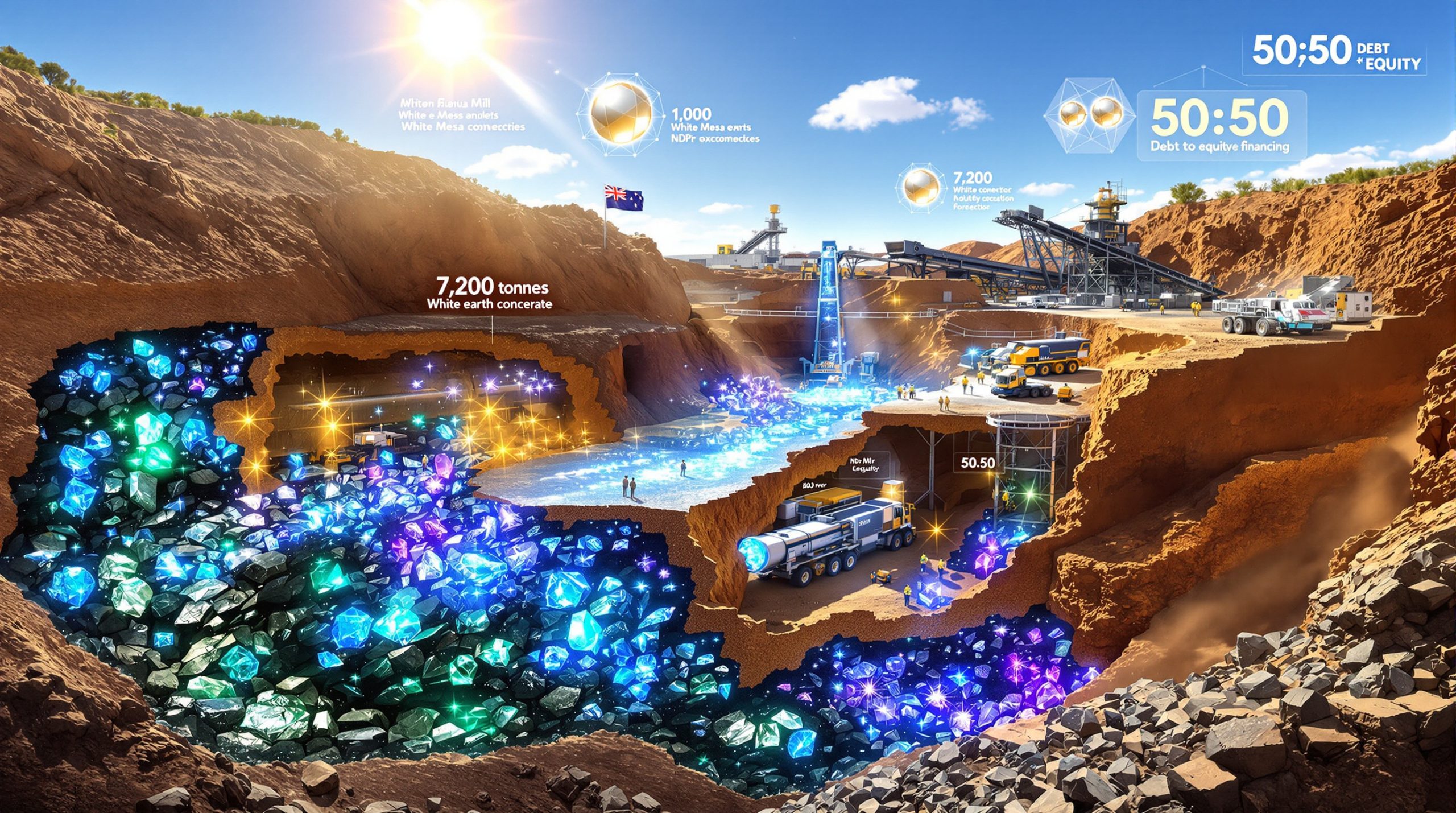Understanding the Scale and Significance of Critical Minerals Partnerships
Critical minerals agreements reach historic status when they fundamentally reshape international supply chains and establish strategic partnerships that extend far beyond traditional commodity transactions. These landmark deals create new pathways for securing essential materials while addressing national security concerns and technological advancement needs through comprehensive critical minerals strategy frameworks.
The recent bilateral agreement between Australia and the United States exemplifies this evolution, featuring a $US2 billion joint investment commitment over six months, split evenly between both nations. This framework supports an unprecedented $US8.5 billion pipeline of critical minerals projects across both countries, marking a significant departure from conventional trading relationships. Furthermore, this historic critical minerals deal demonstrates how modern partnerships prioritise long-term security over short-term market fluctuations.
Key Components of Transformative Agreements
Modern historic critical minerals deals incorporate several distinctive elements that separate them from standard commodity contracts:
• Financial magnitude exceeding traditional market transactions
• Strategic partnership structures involving government-level cooperation
• Long-term supply security spanning multiple decades
• Technology transfer provisions and collaborative development initiatives
• Equity participation rather than simple purchase agreements
The Australia-US framework demonstrates these principles through specific project commitments, including the Alcoa and Sojitz gallium recovery project in Western Australia and Arafura's Nolans project in the Northern Territory. The former represents a trilateral collaboration with Japan, projected to provide 10% of global gallium supply, while the latter targets 5% of total rare earths production globally once operational.
Strategic Imperatives Driving Modern Mineral Diplomacy
Contemporary critical minerals agreements emerge from unprecedented global supply chain vulnerabilities and economic security concerns that governments now actively address through bilateral partnerships. Nations recognise that access to these materials directly impacts defence capabilities, clean energy transitions, advanced manufacturing competitiveness, and technological sovereignty.
The strategic nature of these deals reflects growing awareness of dependency risks. Australian Prime Minister Anthony Albanese emphasised this reality in the historic critical minerals framework signed with President Trump, stating that cooperation on critical minerals and rare earth supply chains demonstrates the trusted partnership between Australia and the United States as strategic defence allies.
Albanese noted that "Australia contains much of the periodic table of critical minerals and rare earth metals vital for defence and advanced technologies". This historic critical minerals deal represents a cornerstone achievement in bilateral cooperation.
Market Access Challenges and Solutions
Despite the historic nature of these agreements, significant challenges remain in facilitating international exports and creating viable supply chains outside traditional pathways. Dr. Lian Sinclair, an economic geographer at the University of Sydney's School of Geosciences, highlighted critical limitations in current approaches.
According to Dr. Sinclair, without investment in refineries and magnet production in allied countries, Australian miners will continue facing two difficult scenarios: selling into Chinese domestic industry or being outcompeted by Chinese producers. The analysis notes that apart from Australian rare earths mining company Lynas Rare Earths, which successfully sells into the Japanese market, miners struggle to identify potential international buyers.
However, the implementation of sustainable mining practices within these partnerships offers new pathways for addressing these challenges. In addition, the broader mining industry evolution continues creating opportunities for innovative supply chain solutions.
Differentiating Historic Agreements from Traditional Commodity Deals
Modern critical minerals partnerships represent comprehensive frameworks that establish integrated approaches to supply chain security, moving beyond simple buyer-seller relationships toward strategic alliances with shared investment and risk.
| Traditional Commodity Deals | Historic Strategic Agreements |
|---|---|
| Price-focused negotiations | Strategic partnership development |
| Short-term market contracts | Multi-decade commitment frameworks |
| Single commodity focus | Integrated supply chain approaches |
| Market-driven pricing | National security considerations |
| Simple purchase agreements | Equity participation and joint investment |
Joint Investment and Collaborative Development
The Australia-US framework exemplifies this evolution through direct government investment and shared ownership structures. The $US100 million equity investment in Arafura's Nolans project demonstrates how modern agreements feature collaborative development programmes rather than traditional procurement contracts.
This trilateral structure, incorporating Japan in the gallium recovery project, creates new models for multi-party cooperation that strengthen collective economic security. Consequently, these arrangements diversify supply sources across allied nations whilst building strategic critical minerals reserve capabilities.
Geographic Diversification and Alliance Building
Historic critical minerals deals actively pursue partnerships across multiple continents to reduce dependency on single-source suppliers and create resilient supply networks. The Australia-US agreement represents what Prime Minister Albanese characterised as a significant new chapter in the formal alliance between Australia and the US spanning over 70 years.
The billion-dollar deals with Australia demonstrate the scale of these strategic partnerships. Furthermore, these agreements establish precedents for future international cooperation in critical resource management.
Technology Integration and Innovation Components
Contemporary agreements increasingly emphasise technological advancement through collaborative research and development initiatives. These partnerships typically include:
• Processing facility development in consuming nations
• Research and development partnerships for extraction technologies
• Environmental sustainability initiatives throughout supply chains
• Workforce development programmes in partner countries
• Alternative material research for emerging technologies
The six-month timeline for implementing the $US2 billion investment demonstrates the urgency with which these partnerships address strategic supply chain vulnerabilities. For instance, this rapid deployment creates opportunities for technological innovation and capability development across both nations.
Supply Chain Resilience and Geopolitical Risk Management
Historic agreements specifically target supply chain resilience through multiple approaches designed to reduce vulnerability to disruptions and create alternative pathways for essential materials. The Australia-US framework addresses these concerns through diversification strategies that bypass traditional chokepoints.
Creating Strategic Reserves and Alternative Sources
Many contemporary agreements include provisions for emergency stockpile development, shared reserve management between partner countries, crisis response protocols for supply disruptions, and alternative sourcing mechanisms during emergencies.
The trilateral structure of projects like the Alcoa-Sojitz gallium initiative creates multiple source development across different allied nations. However, this approach also establishes backup supply arrangements and joint contingency planning for supply disruptions whilst building alliances through shared resource interests.
Environmental Standards and Sustainable Development
Modern critical minerals agreements increasingly emphasise environmental responsibility throughout extraction and processing operations. These frameworks typically address environmental impact minimisation, community engagement protocols in mining regions, rehabilitation and restoration commitments, and carbon footprint reduction initiatives.
Circular Economy Integration
Contemporary partnerships also focus on circular economy principles, including:
• Recycling infrastructure development for end-of-life products
• Material recovery technologies advancement
• Waste reduction strategies across supply chains
• Secondary material utilisation programmes
These approaches ensure that historic agreements address long-term sustainability alongside immediate supply security concerns. Consequently, the critical minerals energy transition benefits from environmentally responsible development practices.
Market Structure Evolution and Investment Certainty
Historic critical minerals deals fundamentally alter how resource markets operate by creating price stability through long-term contracts, investment certainty for large-scale projects, and enhanced market access for smaller producers. The collaborative research and development components accelerate technological advancement in extraction efficiency, processing technology development, and alternative material research.
Innovation Acceleration Through Partnership
Joint investment in research and development accelerates technological advancement across multiple areas, including extraction efficiency improvements, processing technology development, alternative material research, and recycling capability enhancement.
The $US8.5 billion pipeline supported by the Australia-US framework demonstrates how these agreements create substantial investment certainty. Furthermore, this approach enables large-scale project development whilst fostering innovation through collaborative approaches.
Future Outlook and Emerging Partnership Models
The evolution toward historic critical minerals deals suggests future agreements will likely feature multilateral frameworks involving multiple nations, enhanced private-public partnerships with increased government backing, technology-sharing platforms for collaborative innovation, and comprehensive crisis response mechanisms for supply chain disruptions.
Expanding Material Scope and Technological Integration
As technology continues evolving, future agreements will encompass newly critical materials for emerging technologies, expanded secondary processing capabilities, advanced recycling infrastructure development, and alternative material research initiatives.
The Australia-US framework, with its trilateral components and comprehensive approach to supply chain security, provides a model for how nations can address critical mineral dependencies. In addition, these partnerships demonstrate how countries can build stronger strategic alliances through resource cooperation.
Key Insight: Historic critical minerals deals represent a fundamental shift from traditional commodity trading to strategic partnerships that prioritise supply chain security, technological advancement, and long-term economic stability over short-term market dynamics. These agreements create new frameworks for international cooperation that address both immediate supply needs and long-term strategic vulnerabilities.
The success of these partnerships will ultimately depend on their ability to create viable alternatives to existing supply chains while fostering innovation and maintaining environmental responsibility. As nations continue recognising the strategic importance of critical minerals access, these historic agreements may well define the future of international resource cooperation and alliance building.
Disclaimer: This analysis includes information about political leaders and agreements that may be subject to change. Readers should verify current political and economic developments when making investment or policy decisions based on this information.
Looking for Critical Minerals Investment Opportunities?
Discovery Alert's proprietary Discovery IQ model provides instant notifications on significant ASX mineral discoveries, helping you identify emerging opportunities in critical minerals before they become mainstream market knowledge. Start your 30-day free trial and gain the edge you need to navigate this rapidly evolving sector with confidence and discover why historic mineral discoveries have generated substantial returns for early investors.




